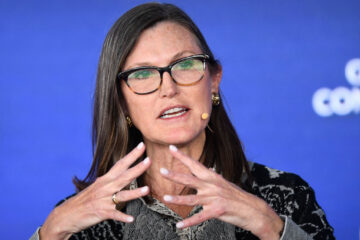Last week’s July jobs report led some economists and investors to worry that recession is on its way.
The numbers included an increase of 114,000 in non-farm payrolls during July, down from 179,000 in June and far below analysts’ forecast of a 175,000 gain. And the unemployment rate rose to 4.3%, the highest level since October 2021.
Afterward, J.P. Morgan economists raised their odds for an economic contraction by year-end to 35%, from 25% previously.
July’s jobless rate triggered the Sahm rule for recession (created by former Fed economist Claudia Sahm).
The rule states that the economy is in the early stages of recession when the three-month average unemployment rate rises by 0.5 percentage points above the 12-month low for the three-month average. That’s what happened in July.
Sahm herself, now chief economist at New Century Advisors, doesn’t see a recession as having begun.
Related: Morgan Stanley analysts reveal Fed interest rate outlook
The increased labor pool since the pandemic, stemming largely from a surge in immigration, has led official numbers to overstate the job market’s weakness, she told The Wall Street Journal.
To be sure, Sahm is concerned about the increase in the unemployment rate and the slowdown in job growth. “The risk of a recession is elevated,” she wrote on Bloomberg.
UNITED STATES – MARCH 7: Federal Reserve Chairman Jerome Powell is walking a tightrope between managing inflation and keeping the economy out of a recession.
Ned Davis’s view on recession
Alejandra Grindal, chief economist at Ned Davis Research, doesn’t see the economy in danger of recession in the near term.
“Other labor market measures, and most broad measures of the economy, while showing signs of slowing, aren’t jibing with the Sahm rule’s recession signal,” he wrote in a commentary.
“The insured jobless rate has never been this low, nor has the number of job openings/unemployed been this high when recessions have started.”
Related: With Fed set to cut rates, this money move may pay off
The insured unemployment rate is the percentage of the labor force covered by unemployment insurance that is currently receiving it. The rate registered 1.2% for the week ending July 27. The number of unemployed people per job opening was 0.8 in June.
In addition, it’s “extremely uncommon to see equities rise in the months leading into the Sahm Rule trigger, and never by the amount we’ve observed in this cycle,” Grindal said.
The S&P 500 index closed at a record high on July 16 and has jumped 19% over the last 12 months.
Bank of America recession analysis
Several financial-market readings point away from recession, says Bank of America Chief Investment Strategist Michael Hartnett.
“Technical levels that would flip the Wall Street narrative from a soft landing [for the economy] to a hard landing have not been broken,” he said.
That includes a yield of 4% for the 30-year Treasury bond. The yield was 4.22% Friday. It also includes a level of 5,050 for the S&P 500 index. It closed at 5,344 Friday.
More Economic Analysis:
Black Monday on Wall Street: 5 reasons stocks are plummetingAfter the Fed tipped markets over, now what?Jobs report triggers key recession warning signal as stocks plunge
It’s also important that the Philadelphia Semiconductor Sector index (SOXX) and the Technology Select Sector SPDR Fund (XLK) are holding above their 200-day moving averages, Hartnett said.
The Semiconductor index traded Friday at 4,709, compared to the 200-day moving average of 4,600. And the Technology Fund closed at 206, compared to the 200-day moving average of 200.
If those levels break, stock traders will target the market’s 2021 highs, Hartnett said. That was 4,793 for the S&P 500 on Dec. 29, 2021, about 10% below Friday’s close.
Related: Veteran fund manager sees world of pain coming for stocks


